Bohemian Waxwing vs Cedar Waxwing: ID Tips
Updated: Oct. 31, 2022
Know what to look for the next time a waxwing bird feasts on your berry tree. Learn to ID a bohemian waxwing and cedar waxwing.
Birding Challenge: Bohemian Waxwing vs Cedar Waxwing
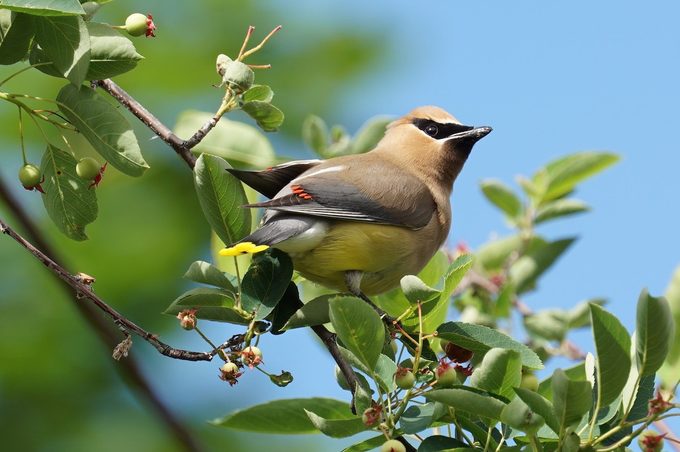
Some birds are incredibly distinct, with one-of-a-kind features—nothing else looks like them. But for some species, a related bird is so similar that it forces us to take a second look. Waxwings are elegantly plumaged, crested birds that have bright yellow tail tips, wander in flocks and feast on berries. They are named for the red, waxy tips on their wings. Learn how to tell the difference between a bohemian waxwing vs a cedar waxwing.
Psst—discover what cedar waxwings eat and how to attract them.
How to ID Cedar Waxwings
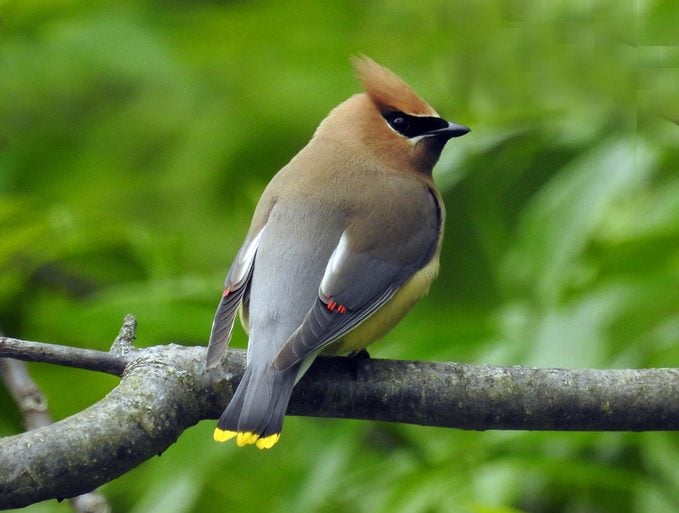
Cedar waxwings have a thin black mask with a white outline, and a brown, occasionally ragged short crest. The birds are medium sized, with a body length about 6 inches, and a pale yellow belly. The squared tail tip features a bright yellow band.
Despite their name, no, they don’t have wings made of wax like Icarus of Greek mythology. Instead, they have small, red, waxy tips on certain wing feathers, noticeable only at close range. The number of red tips gives some clues about the birds’ identity. In cedar waxwings, many young birds (especially young females) have no red tips at all, while some adult males may have red tips on as many as nine wing feathers. These waxy tips don’t seem to serve any purpose other than decoration—one final accessory for the best-dressed birds.
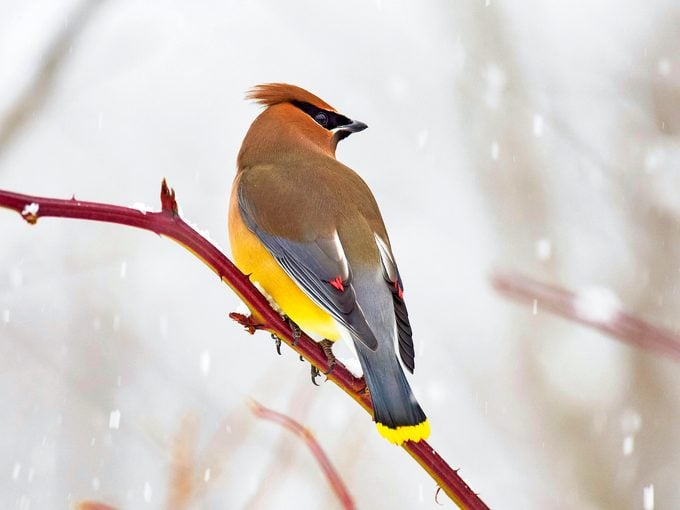
Cedar waxwings appear year-round in the northern half of the U.S. During the winter, they’re also seen in southern states. This species is widespread and could show up in practically any backyard.
Listen for their high-pitched sseee trill. Find out what a cedar waxwing call sounds like.
How to ID Bohemian Waxwings
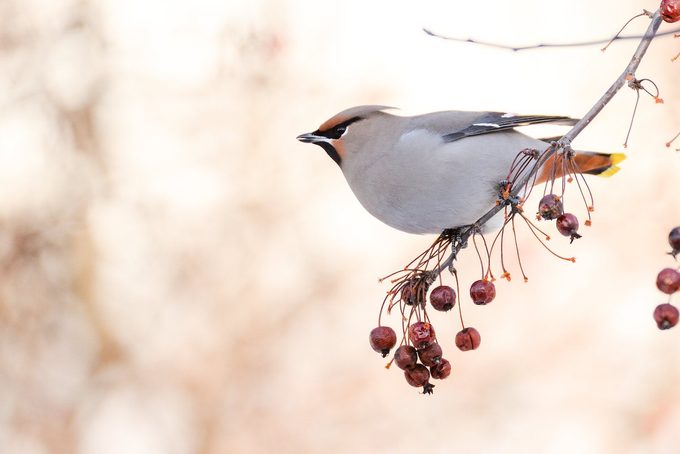
Bohemian waxwings are sometimes confused for their strikingly similar cedar waxwing cousins. Look for a reddish tinge on the face of a Bohemian, and the birds are grayer.
Another good way to tell the two species apart is to check the tail base color. Bohemians have bright reddish-brown coloring under the tail, while on cedar waxwings, those feathers are plain white. Bohemian waxwings also have bold yellow and white wing markings (which are absent on cedar waxwings). This stunning species is one of the top 9 most beautiful birds in America.
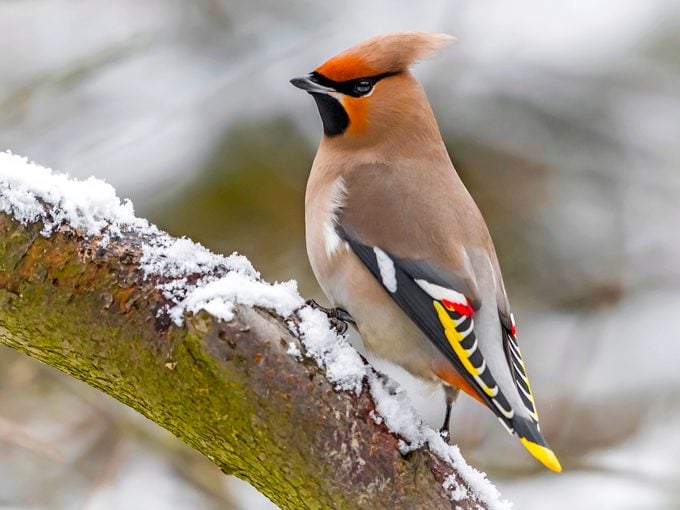
The Bohemian waxwing is a bird of far northern latitudes around the world. These birds are found in the north and northwest, spending summers in Alaska and western Canada. In winter, though, they move south and east, overlapping with the more common and widespread cedar waxwing, with flocks reaching the Atlantic coast in eastern Canada and the New England states. Or they may move southward in the Rockies, getting as far as Colorado.
They give a very fast and vibrato-heavy trill.




















